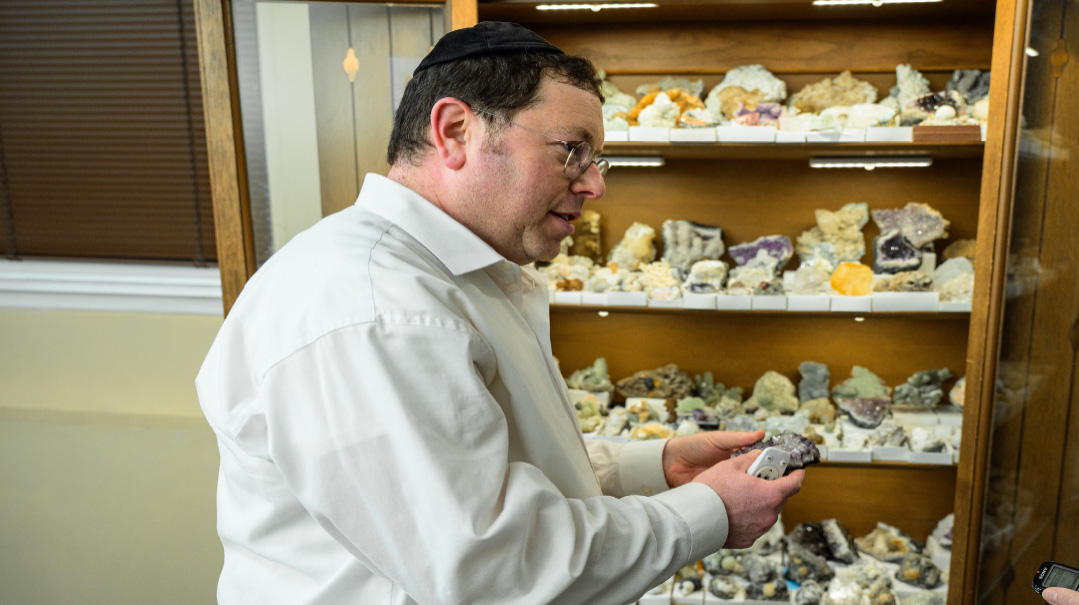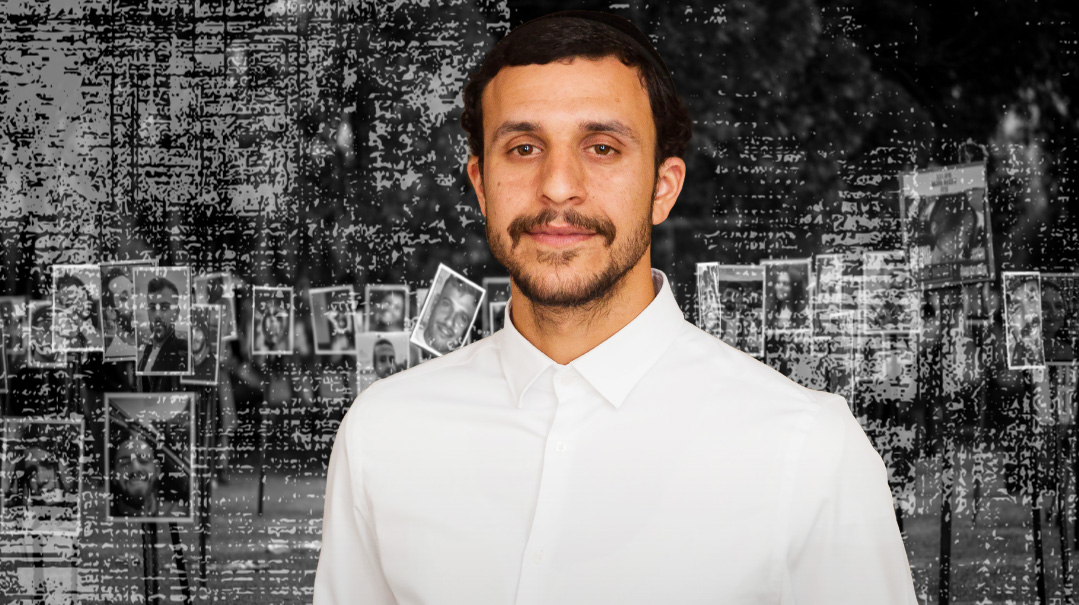For Posterity: Preserving Precious Views of the Past
| September 5, 2023Even if you’re not a techie, you can back up the snapshots of your life in just five minutes

The hard drive crashes, the memory card disappears, the phone falls into the bathtub, the basement floods. A thousand different scenarios, but the grim results are the same: You’ve lost all your pictures. Don’t let this happen to you. Even if you’re not a techie, you can back up the snapshots of your life in just five minutes
Save Those Memories
It was a devastating loss that happened in the blink of an eye. On the last day of a family vacation in Israel, a friend of mine was walking through Jerusalem’s central bus station. Someone bumped into her husband and his iPhone suddenly disappeared from his back pocket.
It took them a while even to catch on. By the time they opened the Find My iPhone app on her iPad, the phone had already made it to Holon. (They even had an exact address on HaGat Street.)
“The actual phone was old, and we didn’t care much about it,” she recalls. “But we were frantic about the lost photos — so many irreplaceable shots from our once-in-a-lifetime trip. Since the phone was on power-saving mode throughout our trip, nothing had been backed up.”
They immediately contacted the police. In a combination of broken Hebrew and English, they explained their dire predicament and the value of their precious photos. They even provided the exact address of the iPhone thief.
“Unfortunately, the Israeli police showed little interest in getting involved in our iPhone squabble,” she says. “So we took matters into our own hands. We texted the thief and offered him a deal: We’d give him the security code and let him keep the phone if he’d upload our pictures. But he didn’t do it for us. It’s been several years now, and I’m still upset by the loss of those pictures. Since then, I’ve become passionate about backing everything up.”
Scanning Old Photos
Photos in albums should be carefully removed first (when possible). The original photos should be clean and dust-free. If you’re not using a flatbed scanner (see below), try to use natural sunlight or a lamp with soft lighting. Bright lights can cause glare.
Once the photos are scanned, they can be stored on your computer or in a cloud account. There are several apps and services to choose from.
PhotoMYNE
Pros:
- Allows you to use your smartphone to scan old pictures. Framed pictures, scrapbooks, albums, film negatives, and albums that can’t be placed in a regular scanner can be scanned with this app.
- Great option for old, delicate, and fragile photos.
- Great option if you have a lot of photos to scan because it’s easy and efficient to use.
Cons:
- Quality won’t be as good as a home scanner
- There is a fee to use this app (though there is a free trial and a free version).
Google Photoscan
Pros:
- It’s free.
- The quality is okay. You take four different pictures of each photo, and it will put them together to create the best possible image.
- There is automatic cropping, rotation, and glare removal.
Cons:
- Quality of the final product will depend on the quality of your device, positioning, and available lighting.
- It will take a bit longer to scan each photo.
Home Scanners
Pros:
- Doesn’t require a smartphone.
- The quality will be better.
Cons:
- If you are using a printer with a flatbed scanner, you will have to put each photo in individually.
- It can be a long and tedious job. You can scan it on a faster setting and compromise on quality, or scan it on a slower setting to get better quality.
Microsoft Office Lens
Pros:
- It’s free.
- It’s great for scanning documents. It can scan multiple documents at once. (You can take multiple pictures for one scan.)
Cons:
- Does not provide the best quality scan, so the clarity of the documents is not perfect. This may not be the best option for scanning photos.
Saving Our Memories
It’s a situation that many can relate to: the missing memory card, the hard drive that crashes, or the lost camera.
“A thousand different things can happen with the same ending,” says Yaakov Katz, of Yaakov Katz Studios, a photo digitization service based in Queens. “Pictures that are gone forever. Sometimes your data can be retrieved, but sometimes it can’t. To avoid this, be proactive. It takes five minutes to back up your pictures to prevent these issues from happening.”
Yaakov Katz is passionate about preserving photos, both digital and old printed snapshots. What began as a family project of sorting and digitizing 14,000 pictures from his grandmother’s basement has led him to help others preserve their most priceless, irreplaceable possessions.
“During Hurricane Sandy, people had only hours to evacuate,” says Yaakov. “The first items that people saved were the photos and sentimental objects. Yet the likelihood of a fire or a hurricane is slim. The chance of a toddler dropping a phone into a toilet — and then losing thousands of precious photos — is much greater.”
While photography has gone digital over the past few decades, proper storage, organization, and back-up of photos hasn’t always kept pace with the technological change. We often don’t think about digitizing and backing up our photos until it is too late.
Izzy Kleinhendler, an information security architect at Keystone Cyber Protection in Lakewood, New Jersey, was recently approached by a customer with a damaged micro SD card containing 3,000 pictures and 900 valuable documents.
“The data had never been backed up anywhere,” Izzy says. “Unfortunately, it was too damaged to retrieve with standard data recovery software. The only option was to send it to a data recovery center [a company that can retrieve data off of damaged storage devices], which can cost hundreds or even thousands of dollars, and there are no guarantees. For a few dollars and a few minutes, he could have proactively backed everything up.”
In another case, one of Izzy’s clients lost three years of Torah chiddushim stored on a computer that got wiped out by a virus. “Since he came to me after the fact, there was nothing to do,” says Izzy. “The general rule is this: Anything that you are not okay with deleting should be backed up somewhere.”
Izzy and Yaakov have simplified the methods (see sidebar) so that even the busy, non-tech-savvy can do it, because, Yaakov says, “No one has time and no one is interested in doing anything complicated.”
Creating Albums
Many of today’s kids aren’t familiar with the concept of looking at pictures — really, hard copies — in albums. Even some two-year-olds are savvy enough to scroll through iPhones. Yet in today’s fast-paced world that overwhelms us with screens and images, it has become more enjoyable to look at printed photos. Albums are also helpful for Shabbos and Yom Tov, when we have the time to savor old memories and enjoy the pictures.
As a friend scrolled through some recent shots of her kids with me, she said, “I have a few thousand pictures from the past seven years on this phone. I wish I could get the best ones into albums, but I just don’t have the time or patience!”
I ask Yaakov what the easiest way is to get those photos into an album.
“You obviously can’t print all of them,” answers Yaakov. “There are countless pictures you don’t want. The first step is to go through the album and favorite the ones you like. Start with one year at a time. It shouldn’t take too long. This is the easiest way to select the ones you like without actually deleting photos, because people have a phobia of deleting photos. If you’re working off of a memory card, upload all of your photos to the computer, and then copy the ones you like into a separate folder.”
What if you’re too overwhelmed (or lazy) to choose your favorite shots? (Too many decisions….)
“You can turn to AI for help,” says Yaakov. “There’s an app, GoodOnes, which uses artificial intelligence to help you go through pictures. It sorts them by good, better, and best.”
Once you’ve picked your favorite photos, it’s easy to print those photos or upload them into a photo book. When it comes to creating albums, Yaakov says that perfection is the enemy of the good. “Don’t do it perfectly, or you will get stuck on one project and never move on. With autofill, you can create a photo book in minutes.”
Digitizing Old Photos
Yaakov Katz has heard some amazing stories in his field about how digitizing old photos can bring memories back to life and help create new perspectives on family history.
One of his colleagues was recently able to digitize a client’s photos after a devastating house fire. There was a lot of soot on the albums, but the photos in the sleeves were completely intact.
Another colleague had a client who had only one picture of herself as a baby with her father, who passed away a short time after the photo was taken. His restoration of that photo brought that woman to tears and smiles. In another case, this colleague was able to restore videotapes for a customer whose daughter had passed away in her teens due to cancer. The parents couldn’t face the videos for 30 years, but when they finally did restore them and watch them, it preserved an emotional and bittersweet link to their daughter.
When you finally decide to undertake the task of digitizing your old photographs, you’ll need to follow some steps. The first step is to sort the photos. Yaakov says there are two options: You can sort the photos by date or by event. Sorting by date gives the photos more context, but can be time- and labor-intensive. Sorting by event is easier to do and helps you place the pictures that you don’t have dates for. (For example, you can make a stack of Chanukah photos, summer photos, and wedding photos.)
The next step is to scan the sorted pictures. While it may be tempting to snap pictures of the old photos on your phone (that’s definitely the quickest way to do it), you will be compromising on quality. Scanning apps are relatively easy to use, and for even better quality, home scanners can be used (see sidebar).
Once the old photos are scanned, they can be handled like the rest of your current digital photos.
Yaakov encourages his customers to place notes or simple captions in albums and photo books to give the context to the pictures. Some of the most famous photos in history are only memorable because of the stories they tell.
“A picture may be worth a thousand words,” says Yaakov, “but if you don’t know what the pictures are, they don’t mean much. What’s a photo without a story? The meaning of a picture is in the background and the story behind it.”
Photos for Bubby
What is the best way to share photos with a grandmother who lives on the other side of the ocean? Emailing or posting them to the family chat only works if Bubby is tech savvy. And we all know that printing and mailing the pictures never actually happens.
“A digital photo frame is your answer,” says Yaakov Katz. “This lets you share pictures — from multiple families — in real time. Bubby doesn’t need any devices.”
Assuming there is Wi-Fi — which many hospitals and facilities have — all she has to do is plug in the digital photo frame and enjoy all the current pictures. Many digital photo frames can receive photos emailed from your computer or phone on a unique email address.
Backing Up Your Devices
Yaakov Katz of Yaakov Katz Studios and Izzy Kleinhendler of Keystone Cyber Protection share the pros and cons of the easiest and most efficient back-up methods:
Google Photos
Pros:
- You can upload all the photos from your phone, tablet, or computer into one central location. If you have a Gmail account, you already have a Google Photos account.
- This allows you to back up photos without thinking too much, and takes about just about two minutes to set up.
- The search feature is cool. It allows you to search by face or by objects, and it’s very accurate. If you’re searching for something or someone specific, this feature will generally produce better results than the human eye. This can be very helpful when you’re creating slideshows or photo projects.
- The daily memories option will share nostalgic photos that were taken on that date. For example: you may have forgotten about your engagement anniversary, but with the app, the photos will pop up and let you relive those moments.
- Plans cost just a few dollars a month (monthly plans start at $1.99). This is a small investment to ensure that your photos are safe, and it also allows you to clear up space on your devices.
- There is a free version that includes 15GB. This storage space is shared with Gmail and other files in your Google Drive.
Cons:
- When you want to take the pictures out of Google Photos, the metadata (information that Google adds to the pictures) will be removed. Even the information that you added will be lost.
- Exporting photos from Google Photos (when you want to terminate your account) is difficult, but doable.
- Google will resize large photos in a way that may reduce quality.
Dropbox
Pros:
- There is a free option, and it allows for easy file sharing.
Cons:
- The primary function is file sharing. When it comes to saving and backing up your photos on a cloud, this is a trickier and more difficult option for the non tech-savvy user.
- The paid option costs more than other programs.
Apple Photos
Pros:
- If you have an iPhone and pay for the extra storage fee, your photos are automatically backed up. It’s a great and easy way to start.
- It operates similarly to Google Photos, but stores photos differently. Google Photos is a huge gallery, while Apple Photos stores photos by event. It also has a nicer layout than Google Photos, making it easier to look through your pictures.
- Apple Photo allows for optimized storage. Apple will back up all pictures on iCloud. This allows the photos to remain on your phone, and take up less storage space. For example 100GB of photos will only take up 8GB. It will be a little slower to look out.
- The fee is inexpensive, approximately $30 a year.
Cons:
- All Apple devices have to be under one iCloud account. It can get complicated to ensure that everything is synced properly if you’re not super organized and tech savvy.
- It can be slow to sync.
Snapfish and Shutterfly
Pros:
- It allows free upload of your photos, and allows you to easily print them and create photo books.
Cons:
- People mistakenly assume that their photos are safe because they’re backed up on Shutterfly or Snapfish. But this is not a safe or long-term photo back-up solution. The goal of these programs is to print photos, not store them.
- If your photos are already uploaded onto one of these sites, are they safe? Getting your photos off is difficult, and if you do manage to export your photos, you will lose out on the quality.
- Your photo storage is never guaranteed. Recently, tens of thousands of Shutterfly customers got emails from the company announcing that they had 30 days to download their photos or else they would be lost forever. Current Shutterfly policies state that an account only remains active if the owner makes purchases at least once every 18 months.
Forever
Pros:
- You are not just renting cloud space, like you do with Dropbox or Google Photos. You are actually buying cloud storage, with a 100-year guarantee on your photos. Photos can be easily exported at any time with all your information intact.
- Your photos are very safe; they have a $10 million back-up fund in case they go bankrupt.
- You can store photos, videos, or any important documents.
Cons:
- It’s expensive. The cost for 10GB of storage (which translates to approximately 5,000 pictures) is $165. However, it’s not that much considering that it’s only a one-time fee, and one family can have a shared account.
Offline backups (If you don’t have Internet)
The easiest thing to do is back up all your photos to an external hard drive that connects to your computer via USB.
Pros:
- There are no recurring costs. You can expect to pay under $100 for 1TB of storage.
- It’s also a great option if you need lots of storage and cloud storage is too expensive.
Cons:
- The external hard drive can get damaged.
- The setup is a little more difficult.
- You won’t have access from anywhere (unless you have the hard drive with you).
- It is difficult to sync photos from multiple devices.
Troubleshooting
No time to scan, organize, or digitize your photos?
You can outsource this to a service that does this for you. Yaakov Katz recently helped a family with a 15,000-picture job that ultimately filled about 50 albums. This was right before Pesach, so the family got to enjoy the albums over Yom Tov.
Old photos are waterlogged, discolored, or partially damaged?
There are many methods of restoring photos. There are web-based services that restore your photos, but for the best results, you may consider using a competent, experienced professional.
Kathy Stone, founder and owner of Calgary Photo Solutions, helped several families recover their photos after the 2013 floods in Southern Alberta. While it can be a lengthy process that requires professional assistance, she shares several tips:
- It doesn’t matter if the damaged photos are old or recent. Don’t let them dry in stacks or envelopes.
- Take a photo on your phone or scan the old photo before you try to do anything to it.
- Separate the photos to let them dry— face up, on blank newsprint-type paper, and, very importantly, not in the sun.
(Originally featured in Mishpacha, Issue 977)
Oops! We could not locate your form.







